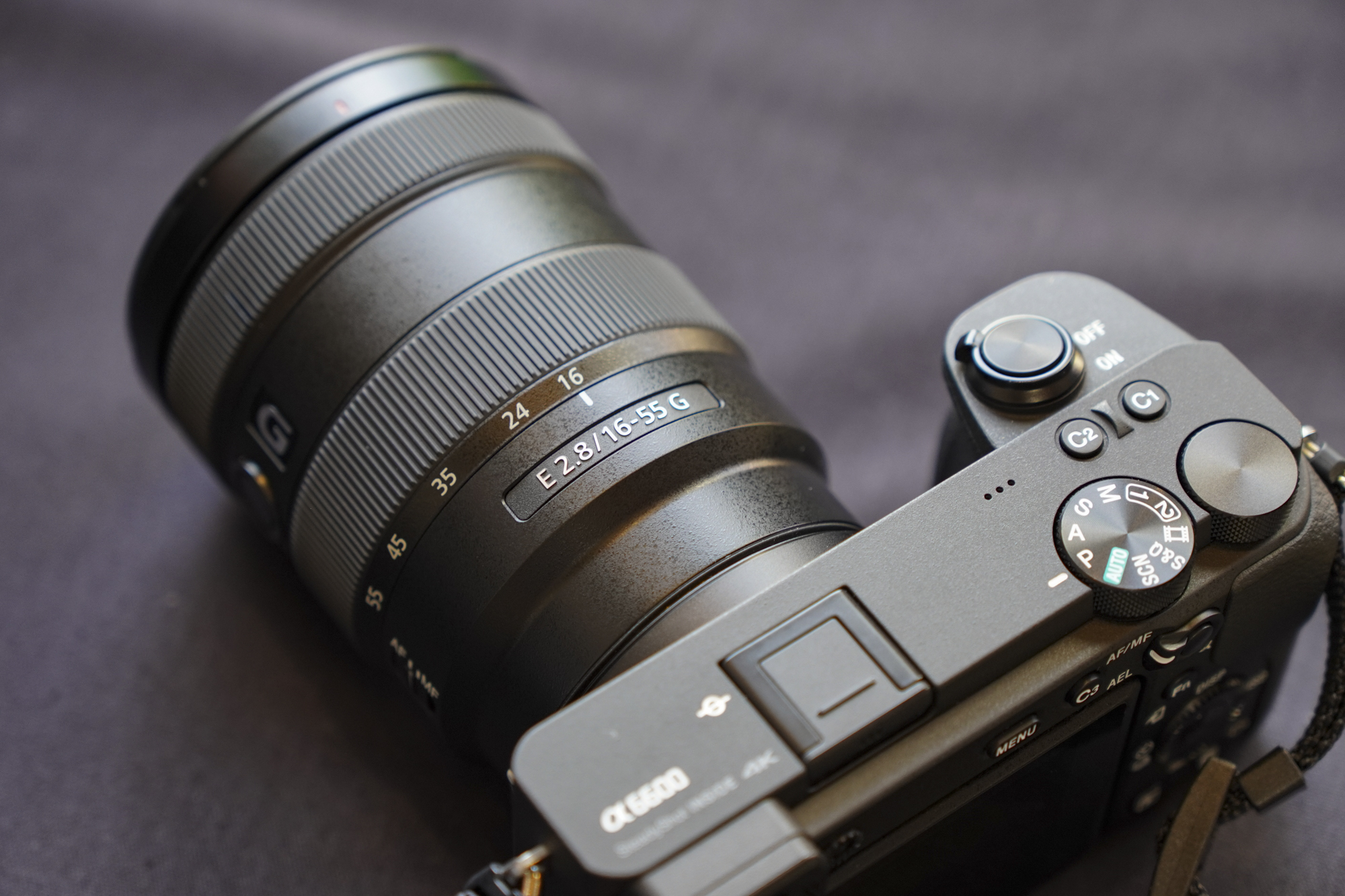Sony adds to its mirrorless lineup with the Alpha A6600, A6100 and new lenses
New camera duo has speedy, AI-powered AF and 4K video as their focus

In the market for a new mirrorless camera but don't quite have the cash for full-frame? You might want to add the Sony A6600 and A6100 to your shortlist, which have both now been confirmed after earlier leaks.
As their names suggest, the two appear to sit on either side of the Sony Alpha A6400 that was announced at the start of the year, with the A6600 taking the honor of the flagship APS-C model in the line.
- Read our in-depth Sony A7 III review
- Sensor sizes explained: everything you need to know
- Sony A7R IV vs A7R III: all the key differences between Sony's Alpha models
Both new models appear to have much in common with the A6400, including a 24.2MP APS-C sensor and A9-level BIONZ X processing. They also both have a top burst shooting speed of 11fps, with autofocus and auto-exposure working throughout.
The pair also match the A6400 in sporting a 3-inch tilting LCD touchscreen. This also supports touch tracking AF in movies, whereby the subject can be keyed with the finger before the camera takes control and stays with it.
On the subject of video, the new models both record 4K footage with full pixel readout and no binning, with 30p and 24p options available. Each also has an intervalometer for creating timelapse movies, while Full HD videos can be captured at up to 120p for slow-motion output.
The A6600 and A6100 also share a hybrid AF system that fuses 425 phase-detect AF points with 425 contrast-detect points, and this covers around 84% of the frame. Sony says the cameras can focus in as little as 0.02 seconds, and they join the A6400 in offering AI-powered Real-time Tracking, Real-time Eye AF and Animal Eye AF, as well as silent shooting at up to 8fps.
That's where the models are essentially the same – here's where they split from each other.
Sign up for breaking news, reviews, opinion, top tech deals, and more.
Sony A6600

The main advantage of the A6600 over the A6100 (and A6400) is that it's fitted with a five-axis, sensor-based image stabilization system, rather than needing this in the lens. It also adds a headphone jack to the microphone port that graces the other two models, as well as HDR video and Real Time Eye AF for movies – just like the Alpha A7R IV that was announced recently.
Like the A6400, but unlike the A6100, the A6600 has a 2.36 million-dot electronic viewfinder and a top sensitivity of ISO102,400, while it also inherits a Z-series battery from its full-frame Alpha siblings, in contrast to the W-series battery used in the other two.
Here, this battery offers around 720 shots with the viewfinder and around 810 shots when using the LCD (both CIPA figures), which is not only strong for a mirrorless camera of this kind, but also the strongest among any Sony mirrorless camera – the A6400, for example, has a CIPA rating of 410 images per charge.
The body also appears to be hardier than the A6100's, with magnesium alloy top, front and rear covers, as well as a magnesium alloy internal frame, and the promise of resistance to dust and moisture. The grip is also more substantial than that of the A6100.
Sony A6100

The baby of the trio, the A6100 mirrors the A6400 in needing to rely on lens-based image stabilization rather than having this inside the camera, and it also has a lower-resolution EVF, with 1.44 million dots.
While it features Real-time Tracking AF technology, it misses out on Real Time Eye AF tracking for movies. It also doesn't have the HLG, S-Log3 and S-Log2 Picture Profiles of the A6400 and A6600.
With a weight of 396g, however, it's a touch lighter than the A6400 (403g) and significantly lighter than the A6600 (503g), which is no doubt in part due to the absence of sensor-based stabilization and the different body materials.
Two new lenses

Sony has also bought out some fresh glass to go alongside the new Alpha duo, namely the E 16-55mm f/2.8 G and the E 70-350mm f/4.5-6.3 G OSS.
Both lenses are designed for APS-C models such as the new cameras above, but will also partner will full-frame models in the line, with a crop factor and images output at a lower resolution.
The E 16-55mm f/2.8 G is described as the company's flagship standard zoom lens, with an XD linear motor and a constant f/2.8 aperture as its main draws. Sony also promises high corner-to-corner sharpness across the frame.
Two Advanced aspherical (AA) elements and two aspherical elements join three extra-low dispersion (ED) elements on the inside, while internal focus keeps the lens at a constant size and center of gravity while focusing. Nano AR coating has also been used to suppress flare and ghosting, while a nine-blade circular aperture is said to deliver natural-looking bokeh.

The E 70-350mm f/4.5-6.3 G OSS also arrives with the claim of high corner-to-corner sharpness and an XD linear motor on the inside. It's been constructed with a seven-blade aperture and a dust- and moisture-resistance, together with a focus-hold button that can be customized to taste.
The quartet will be available from October. The A6100 will be available at a body-only price of £830 /AU$1,349 while the A6600 will be priced at £1,450 / AU$2,399. Various kit options will also be available. Prices for the US is still unconfirmed.
The E 16-55mm f/2.8 G will be priced at £1,200 in the UK while the E 70-350mm f/4.5-6.3 G OSS will cost £830. Pricing for lenses in other markets is still to be confirmed and we'll update this page as soon as we know more.